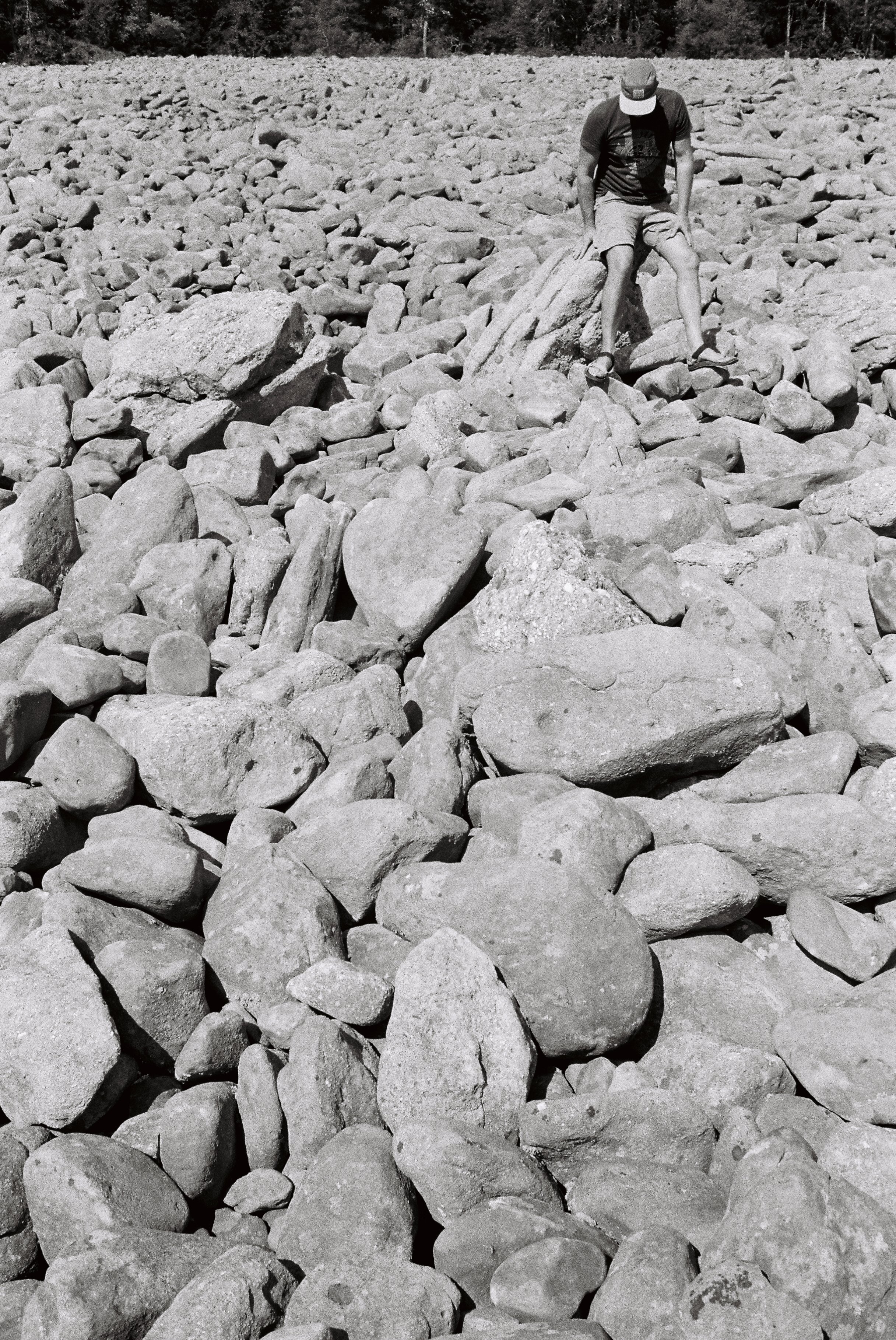Finding Unique Angles and Textures at Boulder Lake
Welcome to another captivating photo essay, this time by Chris Kubik Cedeño. We'd love to hear your thoughts. Feel free to comment below and, if you're interested, share your photo essay with us. Your perspectives add valuable dimensions to our collective exploration.
Boulder Lake represents both a challenge and a delight for photographers: an endless amount of detail and uniformity as a backdrop, but shy to photography in the same way that trees can make poor subjects when meshed in with other trees. Where does the eye draw to? What can compose the “subject” when, essentially, there are thousands of the same thing, be it branches or boulders?
This “lake”—a vast expanse of stones deposited in the general outline of a body of water— gives the immediate impression of its ancient history and evolution as a result of “extreme periglacial conditions.” It tells a story simply by its existence, and, as a photographer, I loved the idea of trying to capture this story in a way that somehow resolved this issue of finding a subject amid uniformity.
One solution was to put models against this backdrop, which, of course, both highlights the model and the backdrop. I used my trusty Konica Hexar AF for this, loaded up with Ilford HP5 for an easy combination of sharpness and contrast. Though the Hexar AF has a 35mm lens, Boulder Field lent an effect of flatness to my quick portraits that surprised me. Of course, it shines as both a consistent backdrop and an endlessly interesting one, given that the pockets and grooves of the stones compel the eye to never quite write it off as a simple background.
My friends had a great time balancing amid the stones, or finding a spot to sit and contemplate. Playing with distance here lent size to Boulder Field, which lent more weight to its prehistoric age. I would have loved to experiment with longer lenses in these same scenarios, providing even more flatness to portraits, or squeezing together the elements of the frame here—stones, surrounding evergreens, sky. But I must confess that the long hike here dissuaded me from packing too heavy of a kit, and, as Hexar AF owners might tell you, its reliability and performance often discourages me from reaching for heavier, or more complex, kits.
Another one of my approaches to scenarios like these—nature, or scenarios where a whole scene compels the eye more than one particular subject, especially when you’re not, say, specifically landscape shooting on a wide—is to try and capture texture in a way that film excels at. I like to underexpose by up to a stop to see if I can draw out more contrast, or, shoot between a shadow and an ultra-exposed portion to rely on the dynamic range of a stellar film like HP5 to showcase the stones, in this case, in varying ways that draw out their uniqueness and uniformity together.
Of course, Boulder Lake also represents another important question for me as a photographer: how much of a photograph is me and my camera versus the setting I put myself in? Sometimes, being ready to make that long hike is just as important as arriving and snapping away!







